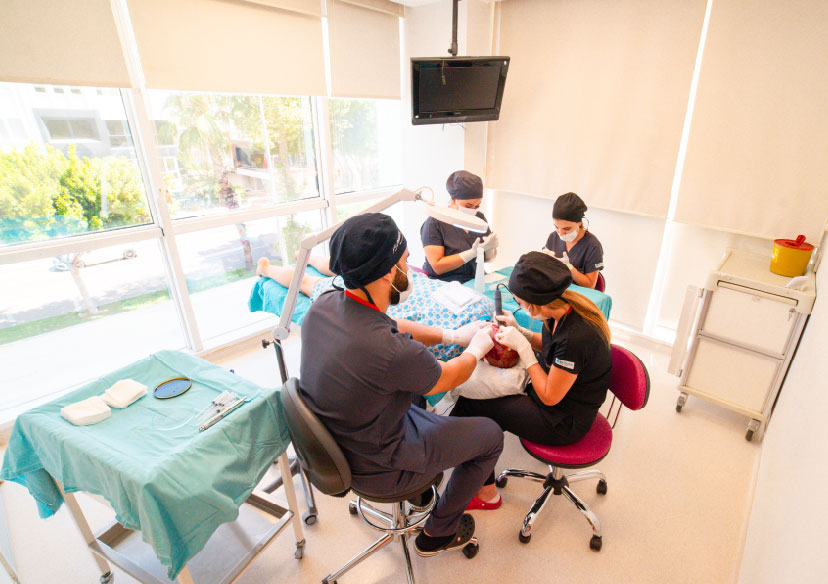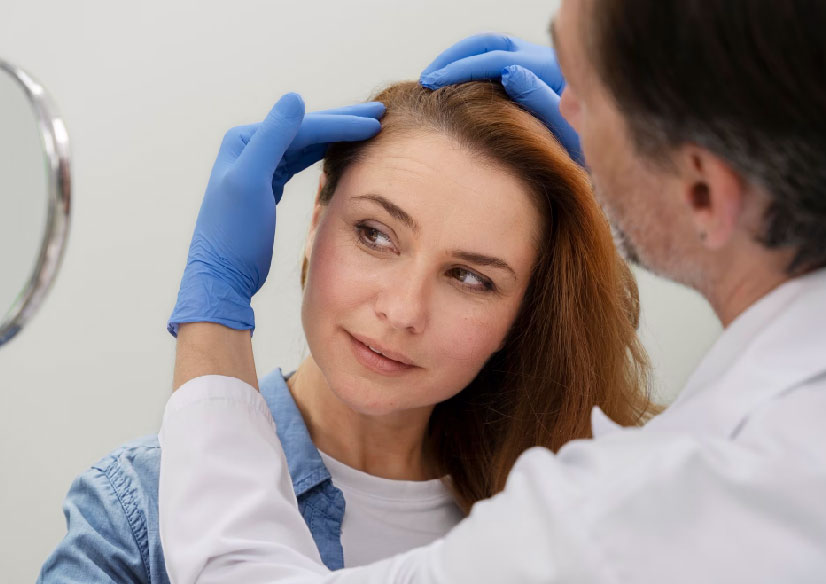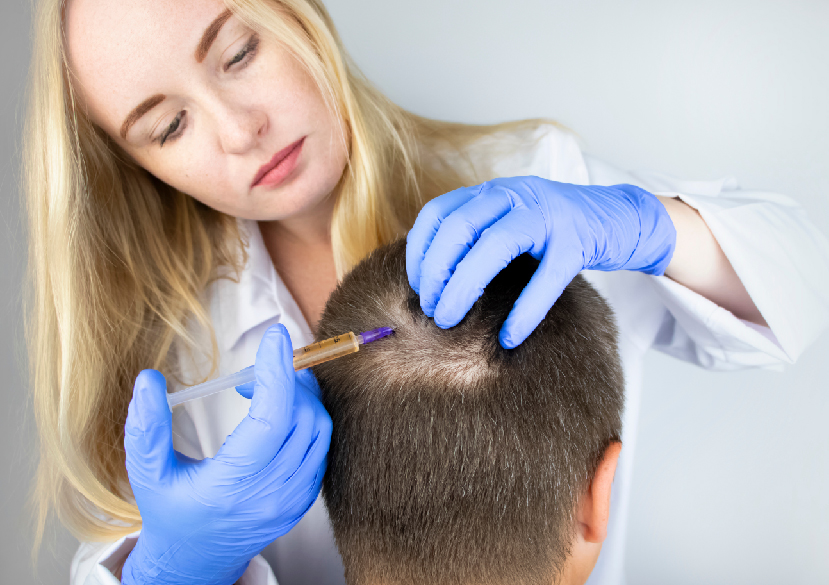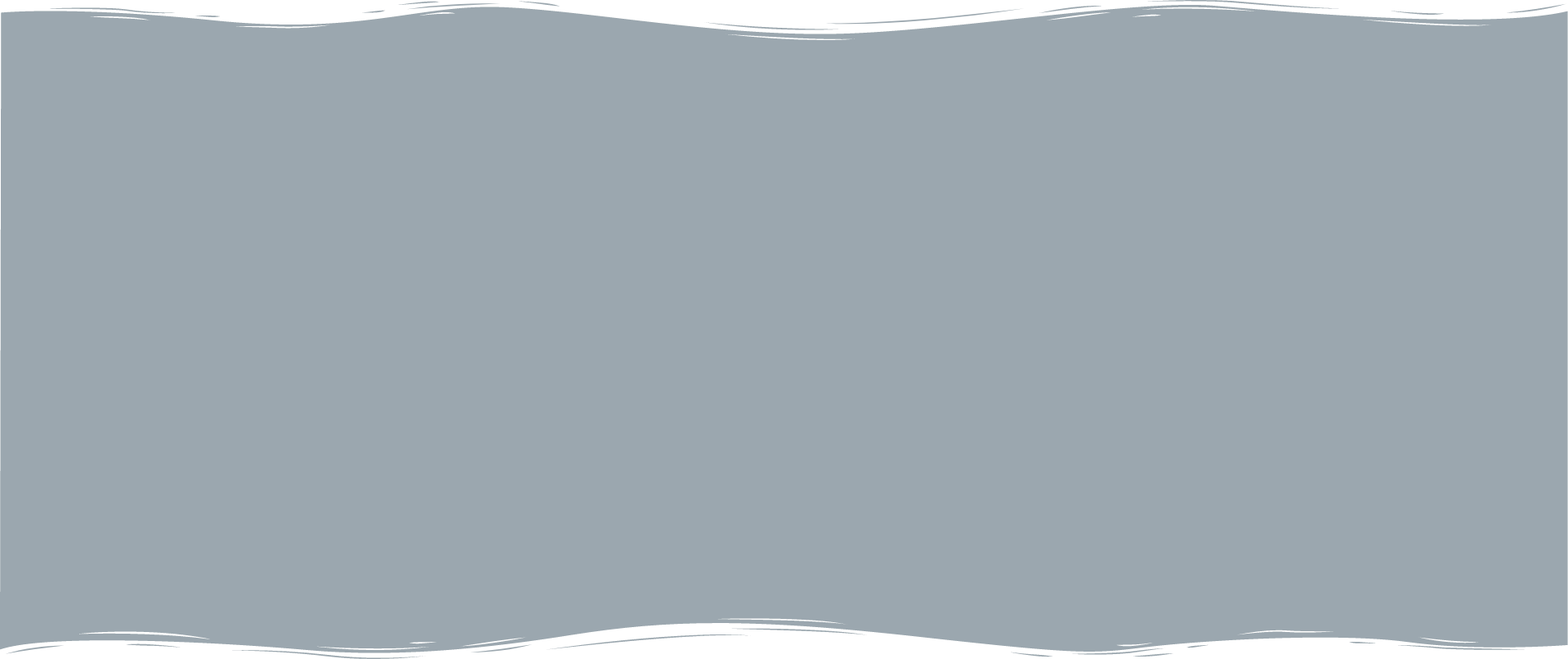Hair Transplantation
IN COLLABORATION WITH MEMORIAL HOSPITAL’S HAIR CLINIC
Memorial Hospitals is a renowned institution known for providing quality healthcare services. We are pleased to connect patients with such a prestigious medical institution that helps combat hair problems.

DHI Hair Transplant
DHI (Direct Hair Implantation) is a direct hair transplantation technique using medical pens, called choi. Grafts (roots), which are taken by fue method, are placed in medical pens called choi without contacting the root (hair follicle) of the graft and transferred directly in to the tissue using the medical pen (choi). This technique, which is the most technological hair transplant method used, has the highest success rate, since there is no contact with the graft follicle. Depending on the structure and thickness of the root, 0.6 mm, 0.8 mm and 1 mm pencils are used. Usually for thin and single hair roots 0.6 mm pens, for double hair roots 0.8 mm pens are used. For triple root and thick roots 1 mm pens or similar pens are used. The needle length of the pencils is adjusted according to the size of the root. Compared to the graft length, this length is on average 25 – 30 % longer. For example; if the graft length is 5 mm, the needle length has to be 7 mm. This way the root is nourished by staying in the dermis layer and the success rate increases. If the length is shortened more than necessary, the grafts cannot reach sufficient depth and the probability of egression increases. Those planted at a depth more than normal will either not come out or will come out with a curly appearance. One of the most important advantages of this method is that it can be planted at the same direction of hair growth as the natural hair structure. The direction of the needle tip while the graft is being placed and the fact that the slit of the pen faces the skin increases the probability of success. This way, while the sharp part of the needle is inserted into the skin, the pen is horizontally angled at the same time. Thus, transplantation can be made carefully to the required depth. When it is inserted at a horizontal angle, the hair graft will compatible join the fat tissue and capillary tissue. Thanks to the pen, the person who does the transplant gives same direction of growth to the new planted hair as the natural hair structure. This way, a very natural looking planting is obtained. A very dense planting can be achieved with the DHI technique. Since the pencil tips are very thin, the number of roots planted per square centimeter is higher compared to the other method.
DHI Technique Stages:
The roots which are taken from the donor area are separated in groups of 1, 2, 3 and 4, counted one by one and kept in organ transplant solution.
Roots with single hair strands are placed into 0.6mm pens, roots with double hair strands are placed into to 0.8 mm pens and roots with triple or more hair strands are placed into 1 mm or similar pens holding the root by the fat tissue with the root of the graft facing upwards and the adipose tissue underneath.
While the pen is angled horizontally the sharp part of the needle is inserted into the skin.
What are the Advantages of DHI Technique compared to the Canal Technique?
The success rate in the DHI technique is higher than the canal technique, as there is no contact with the root.
Since very thin needle tips are used in the DHI technique more dense and maximum graft planting can be achieved.
The DHI technique involves no trauma or scarring and the patient returns to his/her normal life faster. Wound healing, on the other hand, of the canal technique is delayed as incisions are created.
The canal technique involves inflation underneath the skin with isotonic, which causes intense edema in the patient after transplantation. Since inflation is not done in the DHI technique, patients experience minimal edema.
Thanks to the pens the DHI technique is using, the planted hair grows in harmony with the natural hair. The hair roots placed in the opened incisions during the canal technique grow with a more artificial appearance.

Female Hair Transplant
Male pattern hair loss seen in women: It is a type of genetic hair loss that usually starts on the front hairline and the top of the head. The back of the neck area (occipital) is strong and less prone to shedding. In cases that are not caused by hormonal metabolic problems, female hair transplantation can be a successful and permanent method in elimination the negative consequences of hair loss.
Hair loss, which we call female type, is spread over a wide area of the head and hair transplantation can be performed before menopause assuming the hair loss is the same everywhere on the head.
Stages of Female Hair Transplant
Before the operation, the general health condition is examined, the graft is determined and the surgery day is set. Patient is informed verbally and in writing one week beforehand that she should not use blood thinners, reduce smoking and not drink any alcohol. On the day of the transplant, the area to be grafted is shaved; only the portion of patient’s donor area, which covers the needs, is shaved, so that it is easy for the patient to hide the shaved area.
Grafts are taken from the donor points. The grafts taken are kept in organ transplant solution. Depending on the patient’s condition the transplantation is performed with DHI pen or with the FUE technique. After the transplantation the normal hair transplantation process is applied. In the following 10 days the patient washes her hair on her own two or three times every day. Shampoos which do not contain any chemicals, paraben and colorants should be used. Every day and after each wash a natural appearance is regained. Shock shedding may occur in the transplanted area within the first 3 month. After 3 month new hair begins to grow. In the 6th month, approximately 60 – 65 % of growth occurs and depending on the patient the desired hair volume is achieved between the 8th and 12th month. In order to protect the existing hair after transplantation, it is beneficial to use vitamins and have PRP procedures done. We recommend that our veiled patients do not wear head coverings at home, especially for the first three month and choose thin headscarfs that will allow their hair to breathe. It is recommended that for the first year blow dryer should not be used and chemical products should not come in contact with the hair.

Hair Transplant without Shaving
Hair transplantation without shaving (unshaven hair transplantation) is done by shaving only the donor area at the back of the head while preserving the existing length and shape of the hair. This method is generally preferred by individuals with long hair. Since only a certain area is shaved on the back of the head, it’s easy to camouflage the shaved spot with the remaining hair. Roots taken from this area are planted in the area to be transplanted.
Who Should Prefer Hair Transplant without Shaving?
- Women who have male pattern hair loss and want to have hair transplant.
- People who have weak hair in general or balding areas in their hair and want to tighten this area.
- Individuals who experienced partial hair loss as a result of an illness or accident.
- People who only have a gap at the forehead area or the top of the head, which we call vertex.
How is Hair Transplant without Shaving Performed?
The first stage of hair transplantation without shaving begins with a trichological examination. The person who is being examined is informed about the operation. The transplant hair line is determined at this stage. After the hair is washed, an easy to hide area is shaved in the donor area at the back of the head. The second stage in transplantation is the collection of hair follicles. At this stage, after the shaved area is sterilized, painless anesthesia is applied for a painless procedure. Hair follicles are collected homogeneously one by one.
Follicles collected at this stage are kept in organ transplant solution at low temperatures. After the extraction from the donor part is completed, the roots are placed one by one in open-ended, cylindrical-tipped pens (Choi Pen) and applied to the area to be transplanted. The biggest advantage of the DHI Pen Technique is that the hair follicles can be given direction of growth of hair as desired. This way, a natural appearance is achieved. The transplant process of hair follicles can take about 3 – 4 hours. Immediately after the transplant plasma treatment is applied to the transplanted area.

Beard and Mustache Transplantation
In recent years, influenced by the pervasive impact of social media, beard and mustache transplantation has emerged as a popular choice among men who desire a well-groomed appearance. This procedure has gained widespread popularity as one of the most sought-after aesthetic treatments worldwide.
The technique involves the extraction of grafts from the back of the client's head or neck, which are then meticulously transplanted into the designated area. Just like in hair transplantation, correctly determining the natural growth direction of beard and mustache roots is of paramount importance. The precise placement of hair follicles, the angle at which they are planted, and the root structure all play vital roles in achieving a natural and harmonious look. To maintain authenticity, the roots are placed at an angle of 5 to 10 degrees. The procedure is virtually painless, administered under local anesthesia, and typically lasts around 4 to 6 hours.
During the initial healing phase, which takes place within 7 to 10 days post-transplantation, some scabbing may occur. It's essential to follow the post-operative care instructions provided by our clinic diligently to prevent any undue stress or strain on the area. It's completely normal to experience a temporary "shock shedding" approximately ten days after the procedure.
Subsequently, in about three months, the newly transplanted beard or mustache hair begins to sprout and thicken. As the days pass, and with proper care, the beard or mustache will continue to grow, achieving the desired length and appearance within 9 to 12 months. Our skilled team at Bilyana HealthCare is committed to ensuring that you enjoy the best results on your journey to a well-groomed and confident you.











